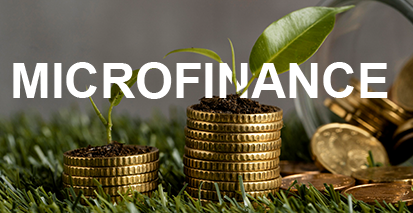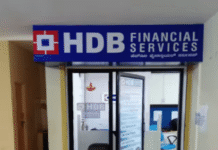ICRA Report Highlights Rising Credit Costs and Asset Quality Risks in the microfinance Sector
In its recent report, ICRA highlighted the increasing delinquencies in the microfinance sector, which is likely to push up the NBFC-MFI credit costs to 320-340 bps in FY2025 from 220 bps in FY2024. The evolving asset quality risks will dampen sectoral growth and earnings in the current fiscal; ICRA expects NBFC-MFIs’ AUM growth to dip to 17-19% in FY2025 from 29% in FY2024. The robust growth in the last two years has accentuated concerns about potential overleveraging of borrowers in certain regions. Further, farmers’ protests and the Karz Mukti Abhiyan in certain regions, especially Punjab and Haryana, have impacted collections and the asset quality. This, along with climatic conditions and operational challenges, including employee attrition, would keep the asset quality under pressure in the near term. As per ICRA’s estimates, non-performing assets (NPAs) have increased by 30 bps in Q1 FY2025.
Prateek Mittal, Assistant Vice President & Sector Head – Financial Sector Ratings, ICRA said: “Microfinance exposure in Bihar and Uttar Pradesh has grown at a compounded annual growth rate (CAGR) of 36% and 46%, respectively in FY2021-FY2024 compared to the overall industry growth of 19% during the period. In addition, the average loan outstanding per borrower has been increasing and was relatively higher in relation to per capita income of these states.”
One of industry’s self-regulatory organisations, Microfinance Industry Network, recently introduced guardrails for responsible lending, to strengthen the lending practices and address concerns regarding the overleveraging of borrowers. The salient features include capping the overall microfinance indebtedness of a borrower to Rs. 2 lakh while restricting the number of microfinance lenders to a maximum of four. In ICRA’s opinion, while these norms are expected to address the risk to some extent, adherence to the same remains monitorable. ICRA expects some impact on the business volumes in the near term with some borrowers becoming ineligible for microfinance loans under the lending guardrails.
The NBFC-MFIs reported a marginal decline in assets under management (AUM) in Q1 FY2025. While demand remains robust, ICRA expects the NBFC-MFIs’ AUM growth to significantly moderate to 17-19% in FY2025 from 29% in FY2024, given the rising concerns on asset quality and operational challenges. On the earnings front, ICRA expects them to report a lower but healthy return on managed assets (RoMA) of 2.5-2.7% in FY2025 compared to a record high of 3.6% in FY2024. Increasing cost of funds and downward revisions in lending rates are likely to compress the interest margins of the NBFC-MFIs in FY2025. This, along with asset quality pressure, is expected to moderate their earnings in FY2025.
“Rising borrower leverage levels and increase in multiple lending in the areas of operations have led to concerns on near-term asset quality. Microfinance is at an important juncture wherein prudent lending practices grounded in deep understanding of the borrower’s repayment capacity needs to be the focus area for sustainable growth. Long-term prospects for the industry, however, remain healthy,” Mittal added. ICRA maintains a Stable outlook on the sector on the back of adequate capitalisation and liquidity even as earnings and asset quality are likely to witness near-term headwinds.
Exhibit 1: Increasing delinquencies of NBFC-MFIs
Source: Data from various NBFC-MFIs, ICRA Research; E – Estimated; ICRA’s sample set of companies consists of 22-26 MFIs at different months, contributing 80-90% to the AUM of NBFC-MFIs
Exhibit 2: Potential risk of overleveraging of borrowers in Bihar & Uttar Pradesh
Trend of portfolio outstanding per unique borrower for the key states in relation to per capita income of the respective state; Data in the bubble represents AUM CAGR during FY2021-FY2024; Source: MFIN Micrometer, ICRA Research
Exhibit 3: Moderation in NBFC-MFIs’ AUM growth expected in FY2025
Source: Data from MFIs, MFIN, ICRA Research





